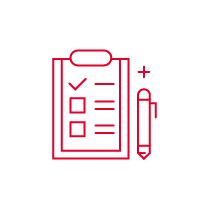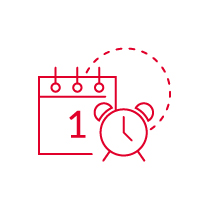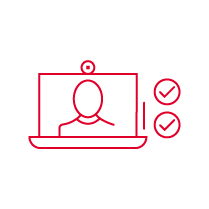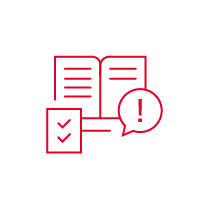As remote work becomes more common, many employers are rethinking their onboarding process to meet the unique needs of remote workers. One thing is certain, setting a remote employee up for success requires significantly more planning and forethought. To ensure a positive experience, every aspect of the virtual onboarding process must be intentional. Here we’ve put together a few best practices to help your remote hires feel welcome, engaged, and confident in their new roles.

1. Plan Ahead
First and foremost, when you are bringing new people on remotely, it’s important to be better prepared and plan ahead. Developing and documenting a standard onboarding process will ensure each new hire has what they need to succeed in their new role.
Logistically, the process for remote onboarding is more challenging because you must send them everything they’ll need to do their job. Since you won’t have the luxury of popping into the office storeroom to grab incidentals that might have been forgotten, this requires more forethought.
Create a list of standard equipment and supplies that are provided to every employee. Also, consider checking with employees in similar roles to find out what other items are helpful to have that might be above and beyond the standard-issue company equipment. For example, do they need a second monitor? A different style keyboard?
From administrative tasks and training to introductions, the first week at any new job can be incredibly busy and even overwhelming. Providing new hires with a detailed plan for their first week on the job can help align expectations and alleviate some uncertainty.

2. Start Early
Ideally, the onboarding process should begin before a new hire’s start date so they’re ready to hit the ground running on day one. This includes everything from completing paperwork with human resources to sending computer equipment and working with IT to set up access to software, servers, and other systems.
The last thing a new hire needs on their first day is to try to log on only to discover their technology wasn’t configured correctly. Starting the onboarding process early also allows new employees to become familiar with new technology.
As a manager, reaching out before a new hire’s start date to connect and set expectations is helpful. It’s hard to know what’s in store when you start remotely, so making that connection early, providing that detailed plan for their first week, and answering any questions they may have helps minimize the unknowns.

3. Cultivate Connections
One of the unique pitfalls of onboarding new personnel remotely is the lack of opportunity for informal workplace interactions and conversations. In a virtual world, you have to plan for the sort of connections that might otherwise happen naturally around the water cooler or in between meetings while working on-site.
During the first week or two, it’s a good idea to schedule one-on-one meetings for new hires with not only supervisors and team members but with key personnel from other teams that they may work with regularly. It’s also helpful to provide a contact list of resources throughout the organization that might be helpful, such as the IT help desk or human resources.
Making sure there’s time for organic conversations between team members about who they are and what they’re interested in to get to know each other in more of an informal way is equally important to building relationships. This could mean planning informal conversations at the start or end of meetings or scheduling virtual lunches or happy hour events to welcome new team members.
If you’re interested in an organized team-building activity, we recommend various excellent options for engaging remote and hybrid teams to help foster stronger connections.

4. Schedule Regular Check-Ins
Again, without the convenience of stopping by their office, it’s important to schedule regular check-ins with new hires to see how things are going. Checking in frequently and intentionally through video chats, calls, emails, and even instant messaging can help ensure your trainee has what they need to succeed.
There is nothing wrong with over-communicating early on in the onboarding process. This can be especially helpful during the first few days and weeks when they may not yet know what they don’t know. Keeping those lines of communication open by touching base frequently can help gauge their performance and overall job satisfaction.

5. Appoint an Informal Mentor
While connecting with your supervisor is an important part of the onboarding process, connecting with peers less formally is equally important. Consider assigning a current employee to act as an informal mentor. This person should be a peer, someone they can go to with questions they might be afraid to ask their manager. It’s also a great way for the mentor to step up into an informal leadership position and share aspects of the company culture you might not get through formal training.

6. Keep Things Interesting
Keep the onboarding process engaging by providing a mix of written materials, videos, one-on-one, and group orientation and training options. Because everyone learns differently and approaches taking on a new role in their own way, it’s important to meet people where they are.
The pacing of your onboarding process is also important. Striking the balance between imparting knowledge critical for them to do their job and overwhelming them with information is critical. We recommend having a very detailed plan for the first week and providing a checklist of items to be completed at their own pace. Then, be sure to follow up and make sure important milestones are being met.

7. Make Them Feel Welcome
Finally, many companies welcome new employees by sending a welcome kit that includes material needs, like laptops and other equipment, and fun things that show off your company’s values and culture. This could include company swag items like coffee mugs, water bottles, or clothing with your branding. Or, if you have a more relaxed culture, you can include fun things like locally sourced food or beverages, uniquely “you” items — anything that might reflect your company’s mission and values.

Key Takeaways for Remote Onboarding
When onboarding remote employees, plan ahead by developing and documenting a detailed onboarding process. Then, start the process as soon as they accept the offer to avoid any unnecessary stress or frustration during those first few days on the job. Avoid feelings of isolation by cultivating employee connections through planned formal and informal interactions. Check-in regularly to ensure they are engaged and excited about their work, and don’t be afraid to ask for feedback so you can continue to improve the process to meet employee needs as they evolve.
Looking for additional ways to improve your remote onboarding process? We’d love to connect, please don’t hesitate to contact us.

